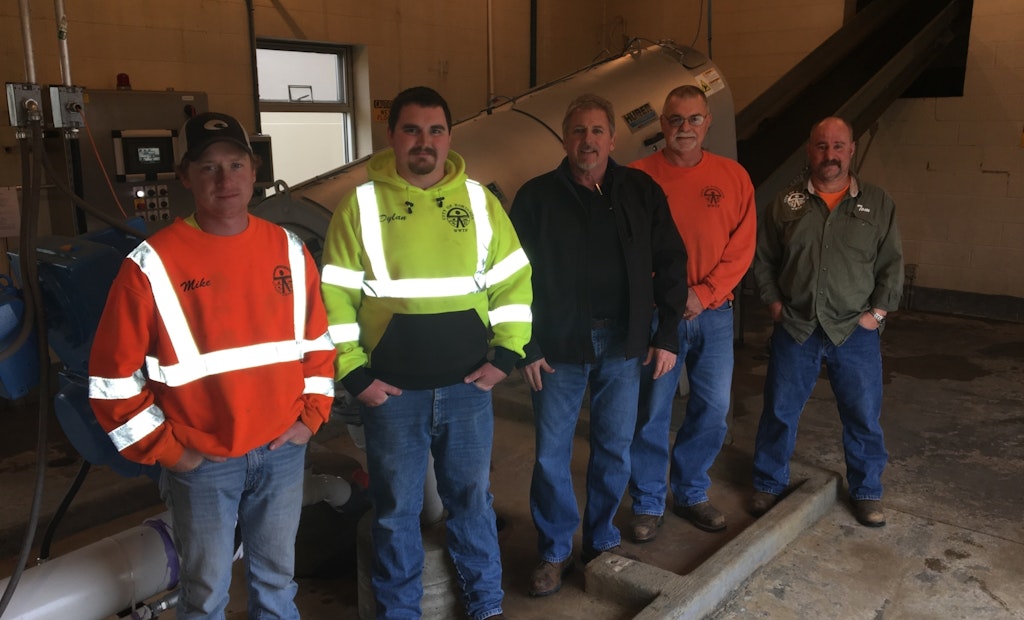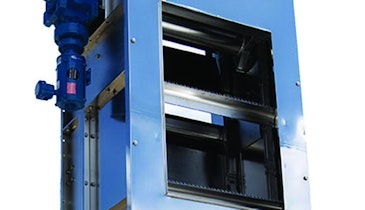Interested in Headworks?
Get Headworks articles, news and videos right in your inbox! Sign up now.
Headworks + Get AlertsRobinson Wastewater Treatment Plant had technology in place, but it was a 1982 model belt filter press that - on average - produced a 15 to 18 percent solids end-product. Due to that degree of dryness, the sludge would not stay stacked up in the sludge storage building, thus drastically reducing the plant’s limited storage space. Lawrence Quick, superintendent of public works, and his team at Robinson WWTP knew that it was time to update their sludge dewatering process and they knew that better technology was out there. The solution Robinson WWTP chose for their technology upgrade was Huber’s RoS3Q screw press.
Simple solution for a simple goal
What Quick and his team at Robinson WWTP really wanted was dryer sludge. That’s pretty simple.
“The screw press has a very basic design. It has few moving parts and requires very little effort to operate and maintain. We turn it on and it operates on its own. An operator checks the screw periodically for any type of alarm, which is infrequent, but that’s it,” says Quick.
The RoS3Q screw press requires:
- Little effort or time to operate and maintain
- Minimal scheduled maintenance or repairs
- Less space than the belt press
The RoS3Q unit is totally enclosed, so there is no splashing and spraying of wastewater in its vicinity. It is operationally efficient at removing solids, producing dryer and lighter sludge and discharging much clearer filtrate water. Because of the screw press, Robinson has been able to reduce the WWTP’s total activated sludge solids inventory from 300,000 to 100,000 pounds. Since the sludge is dryer (averaging 28 percent total solids), the shortage of storage space is a non-factor since dewatered sludge stays stacked up instead of running back down and occupying more of the limited floor space.
Here are a couple belt-press-to-screw-press comparisons that Quick provided:
1. If the belt press ran for more than one day per week, the wet sludge it produced would quickly fill the plant’s storage. If too much sludge was produced, the storage building would get full and daily wasting at the plant would have to stop. The screw press operates four days a week and never overloads the storage building since the sludge can be stacked to the ceiling.
2. Since switching to the screw press, Robinson has been able to reduce the sludge blankets in their secondary clarifiers to around 1 to 2 feet. Before the screw press, Robinson’s secondary clarifiers were consistently around 12 to 13 feet. Additionally, due to the very high sludge age in the activated sludge system, dead bacteria collected in the stilling wells of the clarifiers and would require the use of plant water spray to control it. This also created a scum layer on the surface of the clarifiers. Those issues have gone away and are not problems now.
3. The filtrate water is very clear on the discharge of the screw press. In essence, the solids capture rate is very efficient so sludge is not returned back to the head of the plant. The old belt press had a terrible solids capture rate so a lot of sludge that should have been removed from the system was being reprocessed.
The character of sludge
From smelly soup to neat, low-odor cake, the character of Robinson WWTP’s sludge changed. But these weren’t the only changes. The amount of ammonia nitrogen in the sludge tripled. The local farmers who use Robinson WWTP’s sludge are thrilled. When it comes to the semiannual sludge land application events, the dryness of the final sludge makes it much easier to handle and generates much less odor.
Day-and-night difference
Quick and his WWTP team have noticed:
- A reduction in manpower for sludge processing
- Improvements to sludge handling and storage
- Improvements in sludge quality and filtrate clarity
- A cleaner and less odorous plant atmosphere
- Reductions in budgetary items associated with this process (maintenance and repairs)
Huber Technology provides state-of-the-art equipment for municipal and industrial water and wastewater treatment. For more information on the RoS3Q Screwpress or other treatment technology, visit www.huber-technology.com.
Visit the HUBER Technology, Inc. Storefront






